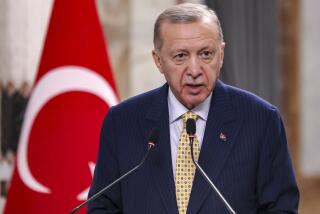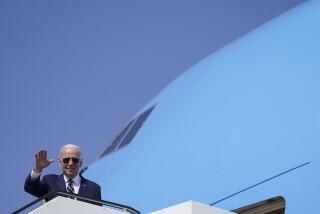REGIONAL ECONOMICS : Southeast Asia Warms to Trade-Bloc Plan : The proposal excludes the West, and the U.S. Administration doesn’t like it. But the region may be determined to make it succeed.
- Share via
BANGKOK, Thailand — Vice President Dan Quayle called it “counterproductive.” Japan was “cool and impassive.” But a proposal for Asian countries to create a trade bloc that could hold its own against North America and a united Europe seems to be catching on in Southeast Asia.
The idea was first raised by Malaysian Prime Minister Mahathir Mohammed, who proposed the creation of an “East Asian Economic Group” after the December collapse of the international trade talks known as the Uruguay round of the General Agreement on Tariff and Trade (GATT).
Mahathir’s proposal would bring together the six members of the Assn. of Southeast Asian Nations (ASEAN)--the Philippines, Thailand, Malaysia, Singapore, Indonesia and Brunei--as well as Japan, China, South Korea, Hong Kong, Taiwan and Vietnam.
The Malaysian leader expressed concern that Asian nations might not get a fair hearing individually--particularly after the formation of the North American Free Trade Zone, involving the United States, Canada and Mexico, and the 1992 unification of Western Europe in a single community for trade purposes.
The plan also reflected a changing reality in Asia: After a decade of looking westward, Japan will soon become Southeast Asia’s largest trading partner and investor. Whether trade barriers can be lowered within Asia will increasingly dominate economic discussions in the region.
Mahathir’s plan specifically excluded the United States, Canada, Australia and New Zealand from his proposal, a move that prompted a storm of criticism. The Australians and New Zealanders felt unfairly left out of the Asian trading club. The United States felt cold-shouldered.
“What we do not welcome is this idea that the U.S. should be excluded from participating in any kind of economic development talks,” Quayle said last week.
Malaysia shot back, calling Quayle “arrogant” and arguing that the Asia proposal was no more anti-U.S. than the European Community, which also did not include Washington. “The U.S.A. is again showing its fangs by trying to dominate everybody and everything,” commented Malaysia’s official radio.
Japan, whose participation would be crucial to getting such a concept floated, was clearly nervous about signing on to any trade plan that might raise protectionist hackles on the other side of the Pacific. It also seemed concerned about stirring up unpleasant memories of Tokyo’s wartime dreams of a Japanese-led Asian empire called the Greater East Asia Co-Prosperity Sphere.
“We shouldn’t create problems and misunderstandings with the aimless establishment of lots of small groups,” Japanese Prime Minister Toshiki Kaifu reportedly remarked last week in apparent reference to the proposed EAEG.
Nonetheless, Asian countries are increasingly nervous that their traditional export markets in the United States and Europe could be squeezed by the formation of new trade blocs. They are calling for greater cooperation to confront the issue.
“The failed GATT talks served as a reminder that the U.S. and the European Community could hold the multilateral trading system to ransom,” said Singapore Prime Minister Goh Chok Tong. “Hence, there is a need for this region to have its own voice to protect its economic interests.”
The United States and others argue that such a voice already exists in the Asia-Pacific Economic Cooperation (APEC) group, which includes all countries in the region. But its lack of consensus is viewed by Asian nations as a fatal weakness.
Thailand and Indonesia have recently called for increased Asian economic cooperation but have not overwhelmingly endorsed the plan for a new group because of concern about alienating the countries that consume their goods.
“ASEAN must increase regional trade and economic cooperation if it wants to maintain credibility and deal as equals with major trading partners,” Thai Foreign Minister Arsa Sarasin said.
ASEAN has now set up a committee to discuss establishing the trade group, to be completed later this year. Malaysia has agreed to let the entire membership decide whether the United States should be allowed to join.
But those concerns could disappear as trade disputes with Washington continue to grow and provoke threats of U.S. retaliation.
More to Read
Sign up for Essential California
The most important California stories and recommendations in your inbox every morning.
You may occasionally receive promotional content from the Los Angeles Times.










